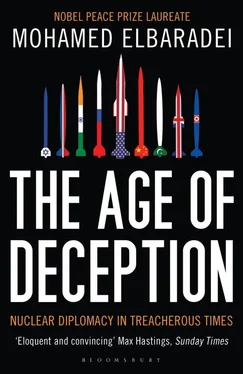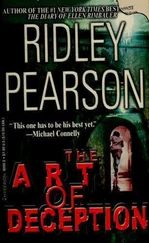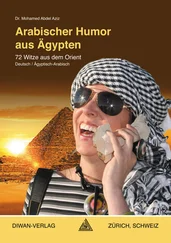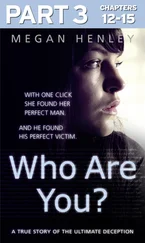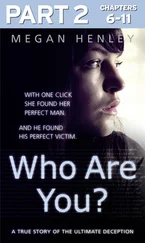Yet this credibility was being dismissed; the self-appointed “coalition of the willing” had decided to ignore our expertise. Despite the on-the-ground knowledge of the UN inspectorate, we were losing the battle of information, in the Western press, and to some extent in the public eye. IAEA and UNMOVIC statements were being discounted, or quoted selectively, even though we were the ones with the best access to the truth, the eyes and ears of the international community.
War was beginning to seem inevitable—regardless of the facts. Troops were massing in the Persian Gulf. We were running out of time.
On March 12, Tony Blair and Jack Straw put forward a draft UN resolution in a seeming effort to prevent war. It proposed six “tests” for disarmament. If Iraq could pass these tests by March 17, Saddam Hussein would be allowed to remain in power, and no military action would take place.
The six tests were essentially intended to be commitments by Iraq to:
1. Broadcast a public statement by Saddam Hussein, on air in Iraq, admitting to the possession of weapons of mass destruction and pledging to give them up;
2. Allow Iraqi scientists to be interviewed by UN inspectors outside Iraq;
3. Surrender ten thousand liters of anthrax that the British believed Iraq was still holding;
4. Destroy all proscribed missiles;
5. Provide an account of Iraq’s unmanned aerial vehicles, or drones; and
6. Surrender all mobile bioproduction laboratories for destruction.
The draft resolution did not pass. Even if it had, at least three conditions would have been impossible to meet, since neither the anthrax nor the mobile laboratories existed, and Saddam Hussein could not admit to weapons he did not have. Even more curious is that the British would have allowed Saddam Hussein to remain in power. This flies in the face of later claims that regime change in Iraq, by itself, was sufficient justification for the invasion.
As the weekend of March 14–16 approached, the British appeared desperate to find a diplomatic solution. As a last-ditch effort, they proposed the idea of a “benchmark”: that is, a list of certain activities for Iraq to perform within a specified time period to prove its willingness to cooperate. I suggested that Blix and I could go to Baghdad with this benchmark list, to work through the concept with the Iraqi principals. The British seemed pleased with this suggestion.
In parallel, I had been pressing al-Sa’adi for an invitation for Blix and me to meet directly with Saddam Hussein. That letter of invitation arrived on Saturday, March 15. I spoke to the British and the French, to see whether they would support this visit as a diplomatic channel. The British said they thought the French should take the initiative.
But the French and the Germans were unenthusiastic. They sensed that the decision to go to war had already been taken in Washington. If they supported a diplomatic mission to meet with Saddam Hussein, and the mission failed, the failure itself might provide a further pretext or justification for military aggression—a pretext they did not wish to supply. They declined to support the mission. As it turned out, Blix himself was not willing to visit Baghdad again; he said he felt it was “too late.”
Blix and I were a good team, but we did not always see eye to eye. While our differences rarely surfaced in public, we sometimes disagreed pointedly behind closed doors. In particular, I had wanted him to join me in requesting more time for the inspections to run their course, considering we had not found evidence of the existence of WMDs or any imminent threat, but he was unwilling to do so. This reluctance may have been rooted in part in the contrasts between the inspectorates we headed. UNMOVIC was a young organization; its inspectors, while technically skilled, were mostly new—new to Iraq, new to UNMOVIC, new to the inspection process, and new to Blix. Also, Blix did not have seasoned technical advisers in chemical and biological issues or missile technology. Demetrius Perricos, Blix’s primary technical adviser, was a high-level, thoroughly experienced former IAEA official, and a longtime confidant, but his expertise was nuclear. Because many of the IAEA inspectors were returning to well-trodden ground and familiar faces, the Agency was correspondingly more confident in its judgments.
Blix also clearly felt that he had been betrayed by Iraq in the early 1990s—lied to outright by everyone from the head of Iraq’s Atomic Energy Organization on down. He also had suffered through a hostile media campaign that described him unfairly as spineless because the IAEA had not discovered the Iraq nuclear program before the first Gulf War, the press having failed to understand the limitations on the Agency’s authority at that time. Now, as the head of UNMOVIC, Blix could afford to be tough in his dealings with the Iraqis.
Very early on, prior to the return of the inspectors, the Iraqis had requested “technical discussions” with UNMOVIC and the IAEA to identify clearly what disarmament issues were viewed as outstanding and what Iraq could do to bring the issues satisfactorily to closure. Blix refused. He told me he suspected Iraq wanted to manipulate these discussions to “write off” valid issues. No such discussions would take place, he declared, before the UNMOVIC inspectors had physically returned to Iraq.
The IAEA was already engaged in similar discussions with our Iraqi counterparts with useful results. The interaction was helping our preparation and would make our inspectors more efficient when the door finally opened for our return to Iraq. And of course the IAEA was not allowing any issues to be written off. “You are the head of UNMOVIC,” I told Blix. “No one can close out UNMOVIC issues without your authority.”
At one point during these preliminary discussions, in a meeting at the Hotel Sacher in Vienna, in the presence of UN secretary-general Kofi Annan, Blix accused me of taking the Iraqi side. “This is unfair,” Annan said to Blix. “Why are we having these meetings at all with the Iraqis if you are not willing to discuss with them what the remaining disarmament issues are?” But Blix would not relent.
In fairness to him and to UNMOVIC, it was not easy for them, throughout the inspections, to reach clear verification conclusions because, despite past intelligence assertions to the contrary, the Iraqis had not kept accurate records of the chemical and biological weapons they had destroyed in the 1990s. Furthermore, Blix was not always supported with accurate data. At one meeting in Baghdad, for example, he told the Iraqis that the list of scientists in their declaration was not complete and put forward the names of four or five additional individuals. General al-Sa’adi conferred with his team, then explained that the scientists named either were dead or had left the country or were in the report with slight Arabic-to-English spelling variations.
Blix also included in one report to the Security Council a statement that was subsequently misused by the United States and the United Kingdom to push for war. We would customarily exchange drafts of our reports the night before the meetings; on this one occasion, we did not do so. “Iraq,” Blix said in this report, “has not taken the strategic decision to disarm, even now.” I thought I understood the genesis of this remark. In one of the letters from the Iraqis, they had referred to inspections as being about “so-called” disarmament issues. Blix had read this phrase as a sign of arrogance, an indication that the Iraqis were not taking their obligation to disarm seriously. In the same statement to the Security Council, Blix also stated, “I have no evidence that they have any weapons left.” But this part of the report was not given the same exposure. The irony was, of course, that as it turned out, there were no disarmament issues in Iraq.
Читать дальше
